Is a ski and snowboard boot interchangeable? No. Are they similar? No. The only similarity they have between them is that they strap your feet in.
So, how are these categories of different types? What are the differences? Shall we take a look and save you a visit to the medical center? Let’s do it!
Ski Boots vs. Snowboard Boots: Bindings
First things first, the requirement of a good binding pair remains the same for both snow sports. However, the manners of putting them on are very different.
While skiing, the gear you are required to ski with includes two skis, a pair of bindings, and a pair of ski boots. You tend to stand on those two skis facing forward with each foot on one board. To strap into bindings, the wearer should be standing straight and clip into the pair.
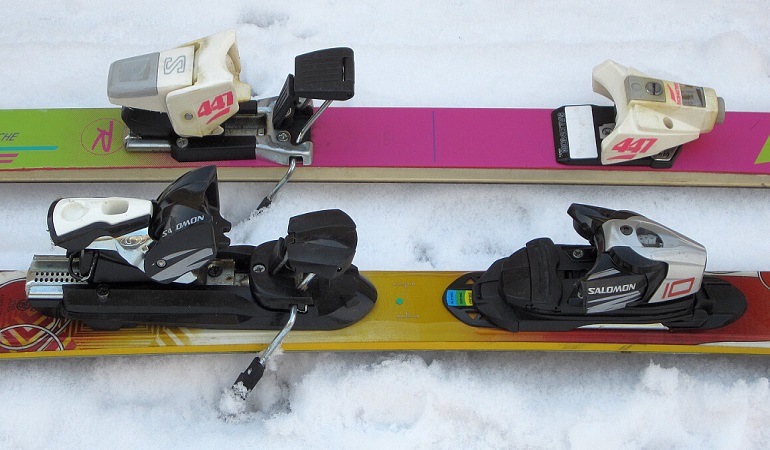
The wearer tends to slide boots into the bindings, and the heel, along with the toes, gets locked into it, offering a snug fit. The bindings further follow the lock mechanism for their attachment to the skis.
So, the bindings get unlocked automatically after a certain pressure whenever a person falls. This way, the person stays safe.
On the flip side, a snowboarder is riding a single deck only. The main equipment includes a snowboard, a pair of snowboard bindings, and snowboarding shoes.
However, in this sport, the rider’s stance is not straight or parallel to the slope but perpendicular to it. You know, the rider stands with their feet facing at a sideway angle. Unlike skiing, in order to put on bindings, the rider is required to bend or sit down.

As far as falling is concerned, snowboarders are locked into their decks, and the board doesn’t detach upon falling. Do you see? The board stays attached due to the absence of any mechanism to release bindings, which on the other hand, is present in ski bindings.
Ski Vs Snowboard Boots: Material
Aren’t you completely taken aback? So was I when I found that out of all the main differences, the material is one of the most prominent ones. So, let’s explore how and why the construction material also draws a line between snow boots and ski boots.
As mentioned earlier, ski boots are way stiffer and more rigid than snow boots, and the use of hard materials precisely vouches for that tough profile.
They are mainly manufactured using hard plastic, which is one tough material, which is why many skiers are seen running back to change boots once they are done with skiing. The common materials are thermoplastic Polyurethanes, Nylon, Pebax, and Polyolefin copolymers.

While the outside is made super hard, the inside is designed, padded, and insulated in an effort to circumvent the overall rigidity. You must be wondering what the reason behind this toughness is.
Well, we have witnessed an impressive evolution in the design and construction of ski boots. Now the boots have grown into a very compact and rugged pair. Not only has the feel evolved much, but the shape and size have also changed significantly.
The ski boots you use today are pretty long, and there is a strong reason for it – the ankle support. You know the high-rise profile gives substantial support to your foot, ankle, and calf. Also, it mitigates the chances of leg injuries, keeping you secure.
These boots are designed so compact that it perfectly cups the heel of the wearer. This elimination of any negative space advocates the easy transfer of the racers’ movement to the skis and helps in navigation. That is exactly why you don’t feel your feet floating in the air inside the ski boots.
Compared to ski shoes, snowboard boots are not rigid or tough but rather soft and comforting. These boots are produced by using less solid composites and fabrics like leather. That is exactly why snowboarding boots swank superior flex.
You know, a snowboarder tends to perform various stunts and tricks, for which flex is a must-have. Without flexibility in the ankles, a snowboarder can only do so much.
However, there are some snowboarding boots that tend to act tough, just like ski boots, but they are only racing snow boots. Racing snowboard boots are made rigid to allow better control.
Ski vs Snowboard Boots: Straps
Sturdy materials like the ones used in the construction of skiing boots demand heavy-duty fastenings. For good performance on snow, the boots demand heavy buckles or lock systems, which is why some strong snaps or buckles are seen on ski boots.
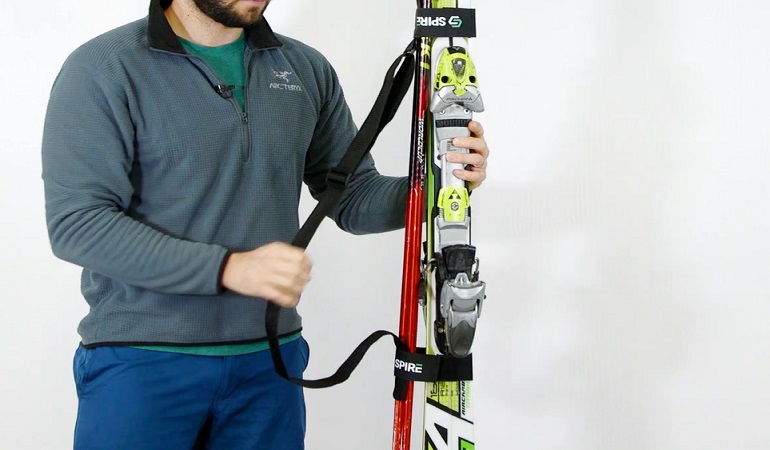
These closure systems keep the shell in place, intact, and tightly wrapped around the foot of the wearer. Out of multiple buckles, the heel buckle is the power strap, as it keeps the heels cupped and resist unwanted movement.
Further, it keeps the wearer’s feet from floating inside the shoes. There are mainly three to six buckle straps on a ski boot.
Besides the heel buckles, other buckles like foot roof hooks and velcro straps also help in cutting down any negative spaces for zonal tightening and keeping the snow from entering the boots.
As you are familiar that typically snowboard boots are comparatively softer boots, they are mostly content with laces and straps only. However, these velcro straps and laces are sturdy enough to resist undesired sudden opening accidents. You won’t see any giant buckles on them, as it is not a requirement.
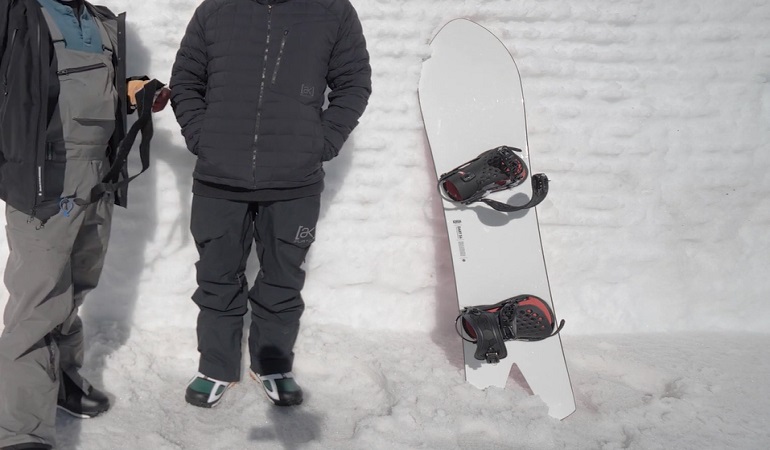
Just FYI, snowboard boots come in three different tightening systems: traditional laces, quick lace system, and BOA system.
Ski Vs Snowboard Boots: Flex
You might not be familiar with a flex value, so let me enlighten you on what a flex is. Flex means stiffness. It is the level of resistance in boots, bindings, skis, and snowboards when you tend to bend.
The lower the flex number/value, the more flexibility you get to enjoy. And the higher the value, the stiffer the flex.

If you compare snowboard boots to ski boots, you will notice that snow boots are very flexible and soft compared to ski shoes. As both are designed for different purposes, both possess different flex ratings. Just so you know, they do come in varying flex degree from around 60 to 140.

Soft flex boots make perfect beginner boots. You are recommended to go for softer flex as such a pair will allow more room for exploration and learning. The lower the flex rating, the more beneficial it is.
Ski Vs Snowboard Boots: Outsole
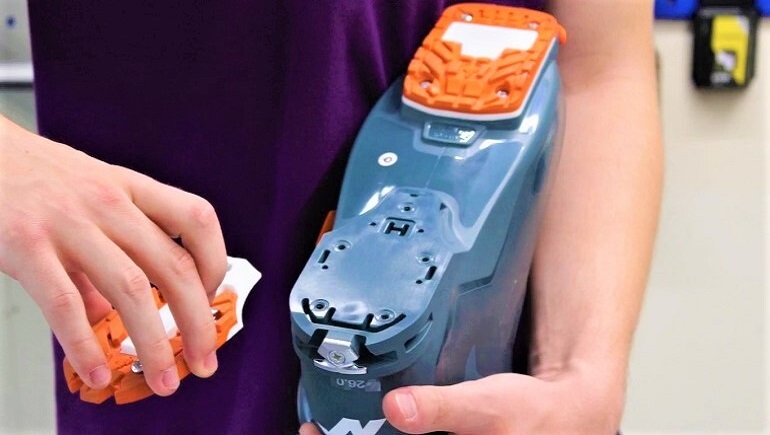
Outsoles are also referred to as ‘norms.’ While ski boots boast chunky outsoles, snowboards lack any. An outsole is attached underneath your boots to provide comfort and make walking easier. It is attached to the bottom of the boots and into the bindings so that your boots stay put under difficult situations.
The reason why snowboards don’t have outsoles is that their bindings do not lock into their boots like in skiing. All boots fit into any type of bindings easily, so the rider need not worry.

There are various types of norms available on the market for skiers, and the easy type delivers a different purpose.
The three most popular types out of many are GripWalk, Alpine ISO 5355, and Alpine Touring 1SO 9523. Just so you know, choosing different outsoles means you need to find a compatible pair of ski bindings; otherwise, it might prove a drastic failure.
Ski Vs Snowboard Boots: Comfort and Walking
All the previously mentioned information must have given you a clue about the comfortability of both pairs.
The tough construction, tight fastenings, and rigid profile of ski boots don’t allow that level of comfort that a snowboard boot seems to provide. All these qualities make them difficult to walk in, so it is not always practical to wear them for long hours.
However, if you still insist on wearing ski boots to parties like après ski, you can get your hand on alpine ski boots with ‘walk mode.’
As snowboard boots boast flexible profiles, they tend to make your walk a lot easier and more comfortable. The low flex value allows them to be worn for long hours on snow while snowboarding or on the ground while exploring the nearby villages.
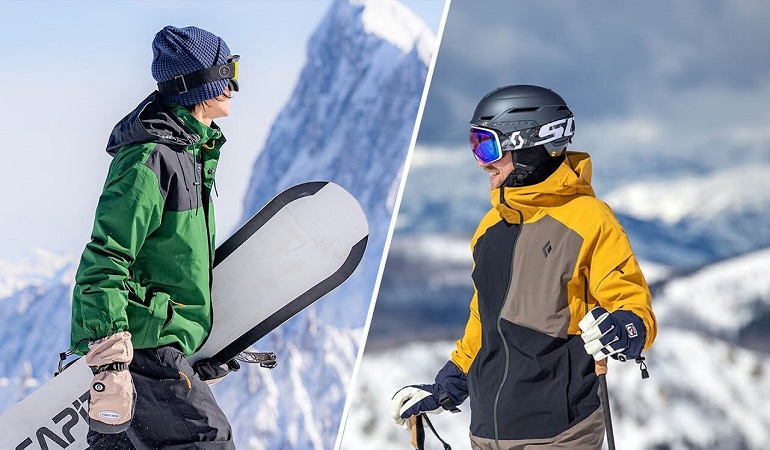
Ski Vs Snowboard Boots: Durability
Rigidity and toughness do not always breed durability, but to our surprise, it sure is the case when it comes to top ski boots. Here, stiffness means more durability. It means all that discomfort in walking has its own benefits.
Many ski boot companies claim that their pairs can last up to 200 days of skiing. So, if you plan to ski for twenty days for a decade, you are probably going to save a fortune. On the flip side, snowboard boots tend to last for seventy days of snowboarding only.
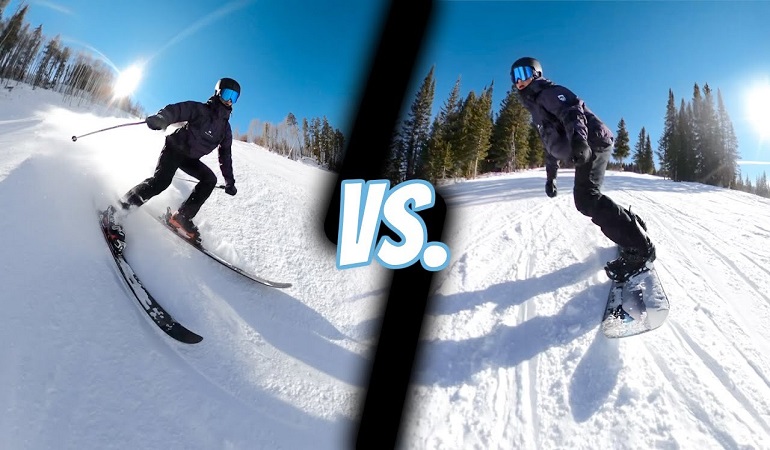
One more thing, the durability of boots partially depends on the usage style and storage manners also. The wearer is also responsible for the number of days their boots spend in their wardrobe. Furthermore, one needs to change the liners when needed.
Ski vs Snowboard Boots: Shell
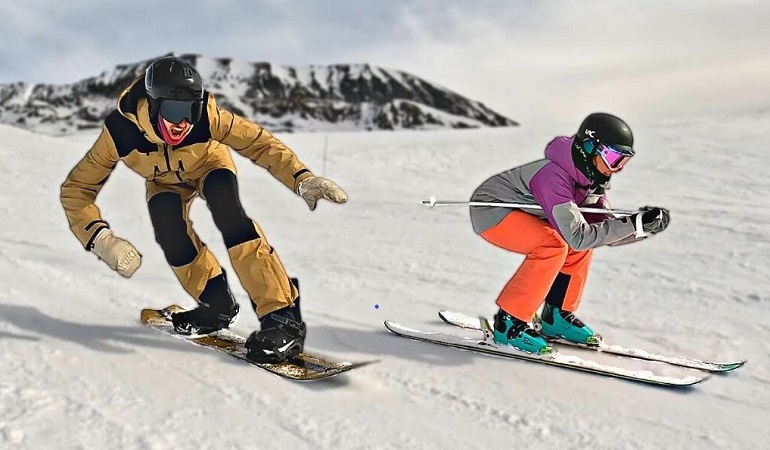
Even at first glance, one can easily differentiate between snowboard boots and ski boots. Snowboard boots seem a lot like normal wear boots, on the contrary, ski boots feature a distinguished look.
Besides the outer shell, one can also spot skiers by the way they tend to walk while wearing skiing boots. The hard shell construction makes it hard to walk in a more comforting manner.
As far as snowboard boots are concerned, they don’t feature any distinguished cuts or features. The shells are usually made of soft synthetic materials or leather, thus, walking seems to become an easier task with them. However, they are still rigid.
Ski Vs Snowboard Boots: Price
Let’s talk a bit about the price points of ski and snowboard boots. While both types are offered in a wide range of price points, ski boots tend to cost more than snowboard boots.
As the engineering of ski boots includes more costly raw material and processes, they become a bit pricey in comparison to snowboard boots. That is why you see prices going up from $200 to $900. The high-end snowboard pair, on the other hand, costs you around $700, and the lowest costs you about $200.
FAQs
Can You Snowboard in Ski Boots?
No, you cannot snowboard in ski boots.
How to Store Ski or Snowboard Boots?
After you are done using them, you are required to give them a good washing, remove the boot liners, and store them anywhere under room temperature.
How Long Does It Take to Break in New Boots?
It takes a week of skiing/snowboarding to break boots, but if you spend more time on snow or you are a heavy rider, it might take less time than a week.
Conclusion
Although it is not fair to compare the two, it is still the most-asked question. I’m sure I have answered most of your queries relevant to this topic.
To summarize it for you, snowboards are more comfortable than ski boots, but ski boots have their perks too. They can last for a decade.
0 Comments